When you take a bite out of a well-made chocolate bar, it feels like you're eating the food of the gods. And, well, you'd be exactly right.
当你从一根做好的巧克力棒上咬下一口的时候,你会觉得自己是在吃神赐的食物。好吧,确实是如此。
The story begins as far back as 1500BC, when the Olmec managed to find and utilize cocoa beans. Of course, it was not called 'cocoa' then, but 'kakawa' – where we get the name from. They managed to turn it into a drink, but historians are hard-pressed to find any evidence that the Olmec did much else with it. The Mayans, however, loved the stuff. They identified it as a food of Kon, the god of rain and wind. They drank it, used the mixture as a substitute for blood in rituals, and even used the beans as currency. That's right; once upon a time, you could buy things with chocolate. As for the solid bars we all know and love? They didn't pop up until around 1850AD. Even after all of these years, however, we still love to offer chocolate to people we praise highly.
故事开始于公元前1500年,奥尔梅克人发现了可可豆,并研究其用法。当然,那时候它还不叫"可可",而是"kakawa"——现在的名字由此演变而来。他们将其做成一种饮品,但历史学家们很难找到证据证明奥尔梅克人用它制作了其他的东西。但是玛雅人很爱这种东西。他们确信它是风雨神Kon的一种食物。他们饮用这种饮品,在祭祀仪式上用它代替血,甚至用可可豆来当货币。没错,曾经有一段时间,你可以用巧克力来买东西。那么我们所认识且钟爱的巧克力棒呢?它们直到公元1850年才出现。然而,纵然过去了这么多年,我们仍然喜欢为我们珍爱的人赠送巧克力。
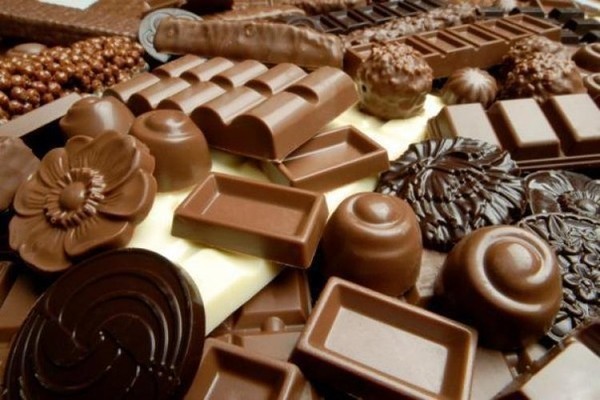
4.Worcestershire Sauce
4.辣酱油
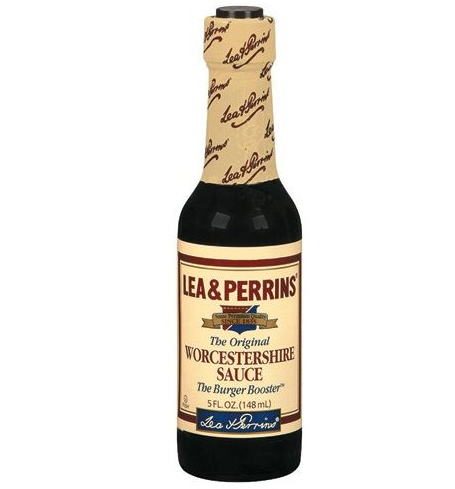
While relatively unknown to most of the world, this foodstuff gets a spot on this list because it was made entirely by accident.
尽管辣酱油在世界上很多地方都鲜有人知,但我们还是将这种食物纳入这篇文章中,因为它的制作完全是个意外。
It began its life as an Indian sauce. The recipe made its way over to Worcester, England, where two chemists, John Wheeley Lea and William Perrins, got their hands on it. They marketed this new exotic sauce, claiming all sorts of healing properties to cure common problems. When they actually made the stuff, however, it tasted awful. The pair stuffed the rest in a barrel and left it in a cellar, presumably to use again some day. That day didn't come until two years later. The pair, rediscovering their old invention, decided to give it a second shot. What should have probably murdered them, actually tasted very good. The pair decided to sell the sauce under the name 'Lea and Perrins,' a brand name that is strong to this day. Who knows how many other food inventions we've missed, due to people not willing to eat vastly out-of–date food?
它最初是一种印度酱油。这个食谱传到了英国伍斯特,被两位化学家John Wheeley Lea 和William Perrins所得。他们售卖这种新的异国酱油,宣称它能治愈一般的疾病。然而,当他们实际制成了这种东西的时候,它的味道非常糟糕。这两个人将剩下的酱油倒进一个桶里,存放在地窖中,准备过几天再用。而这一天直到两年后才到来。这两个人重新发现了他们过去的发明,决定再试试。差点让他们笑死的是,这东西尝起来非常美味。两人决定售卖这种酱油,给它取名"Lea and Perrins",这个商标直到今天依然赫赫有名。因为人们不愿意吃那些过期的食物,谁知道我们因此错过了多少美食的发明?
3.奶昔
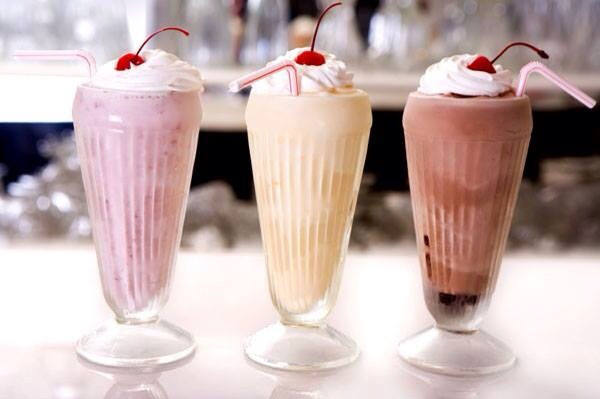
Milkshakes are a lovely treat for the young, but you definitely would not want to give the original recipe to a child.
奶昔是款待年轻人的好东西,但你绝对不愿意给孩子们品尝早期的奶昔。
The first time the world saw the word 'milkshake' was in 1885, in a British newspaper. The article did not go on to talk about if people preferred strawberry or banana flavour; in fact, what the article did say was that milkshake was a "sturdy, healthful eggnog type of drink, with eggs, whiskey, etc., served as a tonic as well as a treat." Yes, that's right; the original milkshake contained alcohol. The actual milkshake we know and love came a little later in the 1900s. In 1922, a man called Ivan "Pop" Coulson wanted to make a remix on the recipe. Ever an experimenter, he added the one ingredient that made a huge impact on the recipe of milkshake forever; ice cream. Since then, the version with whiskey in it has fallen out of public knowledge; unfortunately, alcoholic milkshakes are not an item on the 'hidden menu' in fast food places.
"奶昔"一词于1885年在英国的一份报纸上第一次问世。文章并没有继续讨论人们更喜欢草莓还是香蕉的香味;实际上,这篇文章所描述的奶昔是一种"坚硬的、健康的蛋酒式饮品,里面加有鸡蛋、威士忌等,既是一种补药,也可用来款待宾朋。"没错,最初的奶昔里面含有酒精。我们现在知道且喜爱的奶昔出现得较晚,到20世纪90年代才出现。1922年,一个名叫Ivan Pop Coulson的人想在食谱中再混合点东西。他在试验品中加入了一种发挥了重要作用的原料——冰激凌。从那以后,加有威士忌版本的奶昔就逐渐退出了公众视野;不幸地是,酒味奶昔在快餐店的"隐藏菜单"里也不提供。
2.全麦饼干
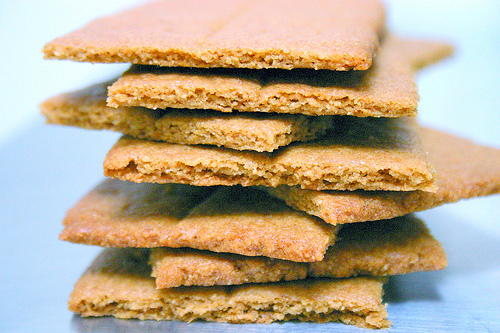
Do you feel less lust after eating a graham cracker? You should do – or, at least, the inventor of it hopes you do.
吃完一片全麦饼干以后是否觉得欲望有所减轻呢?这正是——或至少是其发明者所希望的。
In the 1830s, reverend Sylvester Graham decided that America had become too lust-filled. In order to curb the problem and help people across the nation get back onto a good God-fearing path, he created the 'Graham diet.' The diet consisted of wheat, fruit and vegetables, but absolutely no meat; eating meat and fatty foods was, Graham claimed, a way to invoke sexual thoughts in the mind. Sylvester Graham invented the graham cracker as a part of his newfound diet. He wasn't alone in his mind-set; someone else who shared this was John Harvey Kellogg. Does the name seem familiar? That's right – Kellogg's corn flakes. The beloved breakfast cereal was Kellogg's way to save the souls of the American people, but ended up being a delicious breakfast rather than a cure for the wandering eye. Next time you need to calm down, try stuffing graham crackers into your mouth. If the wheat doesn't do the trick, the dry mouth certainly will.
19世纪30年代,教士Sylvester Graham认为美国欲望太过膨胀。为解决这一问题,帮助全国的人们回到一条虔诚的道路上,他发明了"Graham 饮食"。这种饮食中包括谷物、水果和蔬菜,但绝对没有肉;Graham认为,吃肉和脂肪类食品会引发人心中的淫欲。Sylvester Graham发明了全麦饼干作为他的全新饮食的一部分。他并不是一个人将想法付诸实际;另外一个与他共享的是John Harvey Kellogg。这名字是不是有些熟悉?没错——Kellogg's玉米片。Kellogg想要以这种受人喜爱的早餐谷物来拯救美国人的灵魂,谁知它没有拯救得了迷茫的双眼,却成为了美味的早餐。当下次你需要冷静一下的时候,试试在你嘴里塞上全麦饼干。如果小麦解决不了问题,那口干舌燥的感觉肯定会让你达到目的。
1.棉花糖
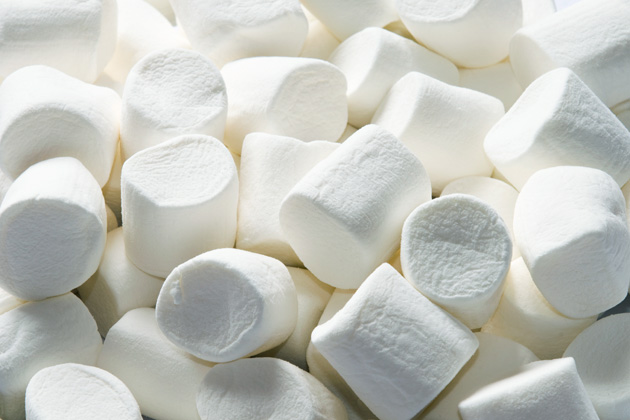
To better understand where the marshmallow came from, you must first understand that the name 'marshmallow' is a combination of 'marsh' and 'mallow'. It refers to the Mallow plants that grew around marshes; hence the name.
为了更好地理解棉花糖从哪而来,你必须要理解棉花糖的名字,"棉花糖marshmallow"是由marsh(沼泽)和mallow(锦葵)组成。它是指生长在沼泽中的锦葵,这就是它的名字。
This specific plant was harvested in Egyptian times. They did not merely eat it for its sweet flavour, however. Back then, Egyptian doctors were convinced that marshmallow was an effective way of curing a sore throat in children, which sounds like a medication a child would never reject. In fact, it's thought that this miracle medicine was eaten by richer kids as a treat, rather than a cure. As for the marshmallow as we know of it today, the root goes back to 1800s France, where it was pushed as a treat for kids and adults alike. Then, in 1948, Alex Doumak created a way to make the little delights in a way that was completely automated, allowing the sweet treat to be produced efficiently. While the marshmallow is treated as a candy rather than medicine, it wouldn't hurt to buy a big bag and 'experiment' for yourself next time you catch a cold.
这种特殊的植物在埃及时代丰收。但人们不是仅仅为了食用它的甜味。当时,埃及的医生相信,沼泽中的锦葵可以有效地治疗儿童咽喉疼痛,孩子似乎不会拒绝这种药。实际上,人们认为,富人家的孩子吃这种神奇的药作为消遣,而不是治疗疾病。至于今天我们所知道的棉花糖,要追溯到19世纪的法国,它很受孩子和成年人的喜爱。到1948年,Alex Doumak发明了一种方法使这种小甜品的生产完全自动化,提高了它的生产效率。尽管棉花糖成为了一种糖果而非药品,但你下次感冒的时候买上一大包自己"试验"一下也不会有害。

















